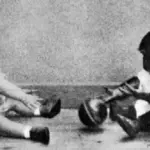
The Monster Study is an investigation that was carried out in the United States in the 1930s and that aimed to find out the effects of different therapies in children with language and communication disorders.
This study has generated debates and controversies that have marked an important part of research in psychology, specifically with respect to its ethical dilemmas. Below we explain what the Monster Study is, what its approach was like and what are the reasons why It is considered a controversial investigation.
What is Monster Studio?
The Monster Study is an investigation about fluency disorder (stuttering) directed by the American psychologist Wendell Johnson in 1939. It was carried out under the supervision of Johnson, but directly conducted by one of his graduate students, María Tudor.
The research was carried out at the University of Iowa and twenty-two orphaned children from the veterans’ orphanage also in Iowa participated. The main objective of the study was to analyze whether stuttering could be induced and if it could be reduced with a therapy based on positive reinforcements.
In contrast to the brain theories that emerged at the time, Wendell believed that stuttering is a learned behavior and as such, it could be unlearned and also induced.
According to the psychologist, stuttering occurs when the person who listens to someone with less fluent speech evaluates this as something undesirable; issue that is perceived by the person speaking and causes tension and concern.
The consequence of this tension and worry is that the speaker worsens the fluency of his speech; which generates more anxiety and again causes the stuttering. In other words, for Wedell, stuttering is a consequence of the effort to avoid stuttering, which is caused by the pressure exerted by the person listening.
Study design
The Monster Study began by selecting the 22 children who participated. Of the 22 children selected, there were 10 who had a stutter previously detected by their teachers and caregivers.
Next, Tudor and his research team personally evaluated the children’s speech. They thus generated a scale from 1 to 5 where 1 referred to the lowest fluency; and 5 referred to the highest fluency. Thus, they divided the group of children: 5 of them were assigned to an experimental group and the other 5 to a control group.
The other 12 children who participated did not have any language or communication disorders and They were chosen at random also within the orphanage. Six of these 12 children were also assigned to a control group and the other 6 to an experimental group. They were between 5 and 15 years old.
None of the children knew they were participating in research; They believed that they were actually receiving a therapy that would last 4 months, from January to May 1939 (the duration of the study).
María Tudor had prepared a therapy script for each group. She would say some positive phrases to half of the children, trying to get the children to stop paying attention to the negative comments that others made about their speech; and to the other half I would say those same negative comments and I would emphasize every mistake in his speech.
Main results
The 22 children were divided according to whether they had a language disorder or not, into a control group and an experimental group. The children in the experimental group received language therapy based on positive reinforcements. This included, for example, praising the fluency of their speech and words. This applied both to children who had a stutter, and to those who had none or very little.
To the other half of the children, those in the control group, Tudor gave a therapy based on the opposite: negative reinforcements. For example, He exalted every imperfection of language, belittled speech, emphasized that they were “stuttering children.” ; and if the children did not present any disorder, he told them that they were not speaking well and that they were showing the first symptoms of stuttering.
The only conclusive result was that the participants in this last group quickly presented symptoms of anxiety, especially due to the embarrassment caused by speaking, which is why they began to obsessively correct each speech, and even avoid communication. His schoolwork declined and his behavior changed toward withdrawal.
Why is it known as a “monster” study?
This studio It is known as a “monster” because of the ethical dilemmas it has generated. The group of children who received therapy based on negative reinforcements also presented negative long-term psychological effects, in addition to those who already had language disorders, maintaining them throughout their lives.
After the study was completed, Tudor returned to the orphanage voluntarily to offer help to those who had developed anxiety and to those who had worsened speech fluency. Even tried therapy based on positive reinforcements.
Likewise, Johnson apologized a year later, saying that the children would surely recover in time, although it was clear that his study had left its mark on them.
Johnson’s classmates and colleagues dubbed this research the “Monster Study,” calling it unacceptable that orphaned children were used to test a hypothesis. Currently, and after several cases similar to this one, the ethical standards of research in psychology have been reformulated in an important way.
After having remained hidden, this investigation came to light and caused the University of Iowa to publicly apologize in 2001. This same university faced a lawsuit for thousands of dollars from several of the children (now adults) who had been long-term affected by the research.








